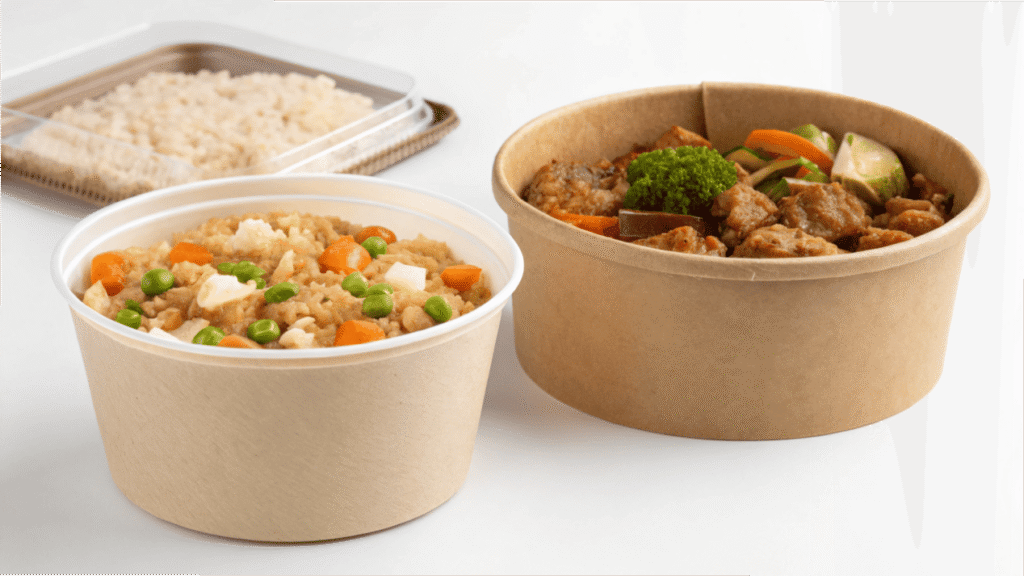You need bowls for your food business, but the options are overwhelming. Choosing the wrong one can lead to a soggy mess, a poor brand impression, or wasted money.
Choose based on your food. Paper bowls are the best all-rounders. Use PP plastic if you need microwaving. Use PET plastic for showcasing cold food. Use plant-fiber for a natural look.
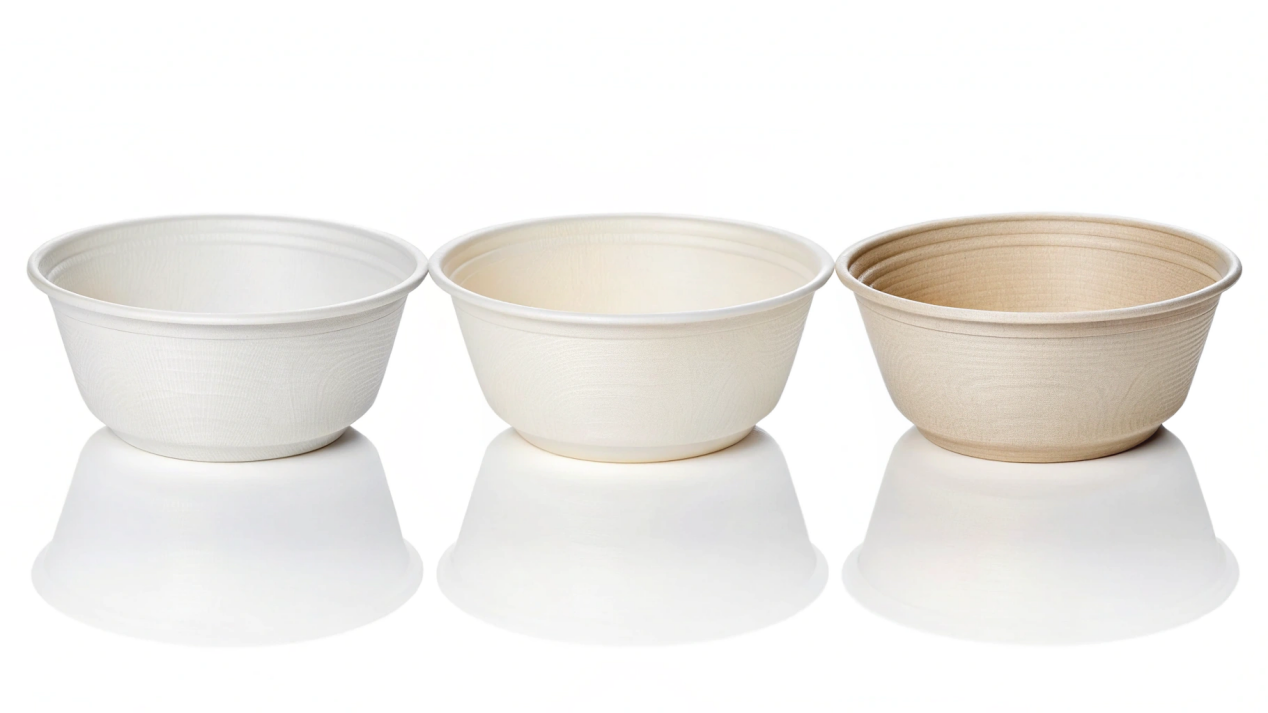
I've seen clients make costly mistakes with this. I remember a new cafe owner who bought thousands of beautiful, crystal-clear PET plastic bowls for her signature hot soup. She didn't know they couldn't handle heat. The first customer complaint was that the bowl was warping in their hands. It was a potential disaster. My job is not just to sell packaging; my real job is to share my 20 years of knowledge so you can avoid these problems. So let's start with the basics.
What Are Disposable Bowls Actually Made From?
You see terms like paper, plastic, and bagasse, but don't know the real differences. This uncertainty makes it hard to choose the right material for your food and brand.
Paper bowls are paperboard with a waterproof coating. Plastic bowls are either clear (PET) or durable and microwavable (PP). Plant-fiber bowls (bagasse) are made from sugarcane byproduct, offering a natural look.
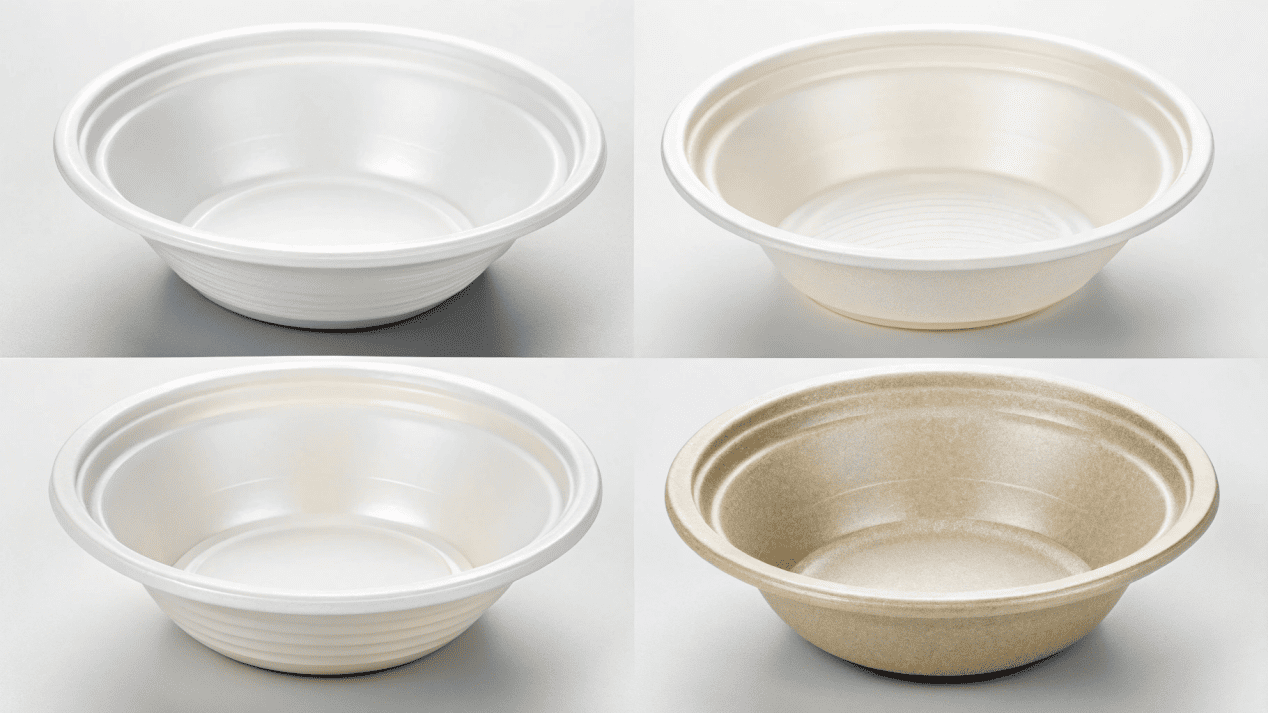
Every bowl starts with its core material. This one choice decides its performance, cost, and environmental story. As an engineer, I focus on these three main types when advising my clients.
Paper Bowls (The Versatile Classic)
This is the true all-rounder. The bowl is made from paperboard, which gives it a sturdy structure. Then, we add a very thin coating on the inside to make it waterproof and grease-resistant. This coating is usually PE plastic, but we now have advanced water-based coatings that are much easier to recycle. Paper is great for both hot and cold foods, from soup to ice cream.
Plastic Bowls (The Utility Player)
There are two main kinds you will see.
- PP (Polypropylene): This plastic is durable and often translucent, not crystal clear. Its biggest advantage is that it is microwave-safe. It's the best choice if you expect customers to reheat food.
- PET (Polyethylene Terephthalate): This is the same crystal-clear plastic used for soda bottles. Its clarity is excellent for showing off colorful salads, but it cannot handle hot food or be put in a microwave.
Plant-Fiber Bowls (The Eco-Contender)
These bowls are made from reclaimed agricultural fibers. The most common is bagasse, which is the fiber left over after sugarcane is processed. They have a natural, fibrous texture and market a strong "earthy" image.
Which Bowl Is Best for Hot Soup vs. Cold Ice Cream?
You serve both hot and cold food, but can one bowl do it all? The wrong choice can lead to a melted container or a soggy, unpleasant mess for your customer.
For hot foods, paper bowls are the clear winner for structure and insulation. For cold or frozen foods, double coated paper bowls or clear PET plastic bowls are best for performance and presentation.
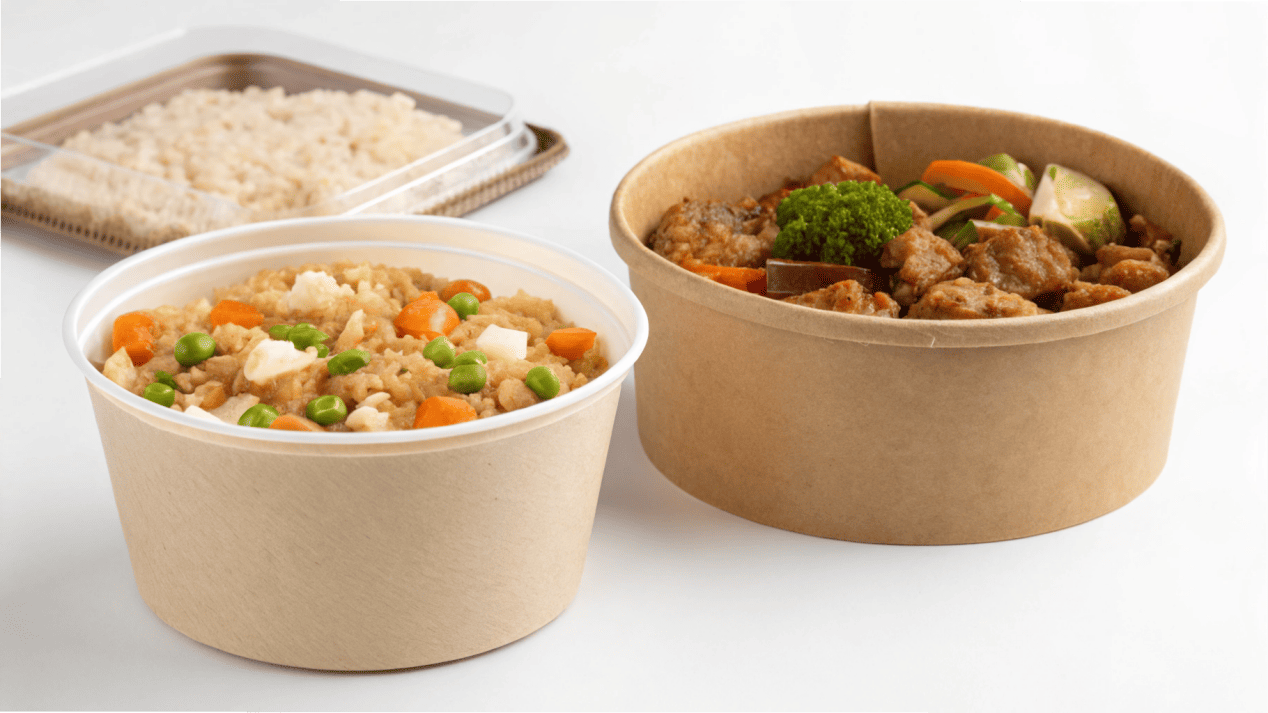
How a bowl performs under heat and cold is critical. Your customer's last impression of your food is the container it's in. Let’s make sure it's a good one.
For Hot Foods (Soups, Curries, Noodles)
The clear winner here is the paper bowl. It provides excellent structure and insulation. It won't get too hot to hold, and the coating prevents any sogginess. Your second-best option is a PP plastic bowl. Its main advantage is being microwave-safe. I advise clients to use plant-fiber (bagasse) bowls with caution. They work, but can become a bit soft and "sweat" when holding very hot liquids for a long time. PET plastic is not an option here; it will warp or melt.
For Cold & Frozen Foods (Ice Cream, Salads)
Here, the double coated paper bowl is king. I always tell my ice cream shop clients that this is non-negotiable. A normal paper bowl is good, but the second coating on the outside prevents condensation from making the bowl feel wet and weak. For showcasing food in a display case, a PET plastic bowl is a strong contender because its crystal clarity makes the food look fantastic. Bagasse bowls are a fine option, but they lack the premium branding potential of a custom-printed paper bowl.
Which Disposable Bowl Is the Most Cost-Effective?
You need to manage your budget carefully. But the cheapest bowl might not be the best value, and premium options can seem out of reach for your business and its goals.
Basic plastic bowls are the cheapest. Standard PE coated paper bowls offer the best overall value for branding and performance. Plant-fiber, PET plastic, and water-based coated paper are premium, higher-priced options.
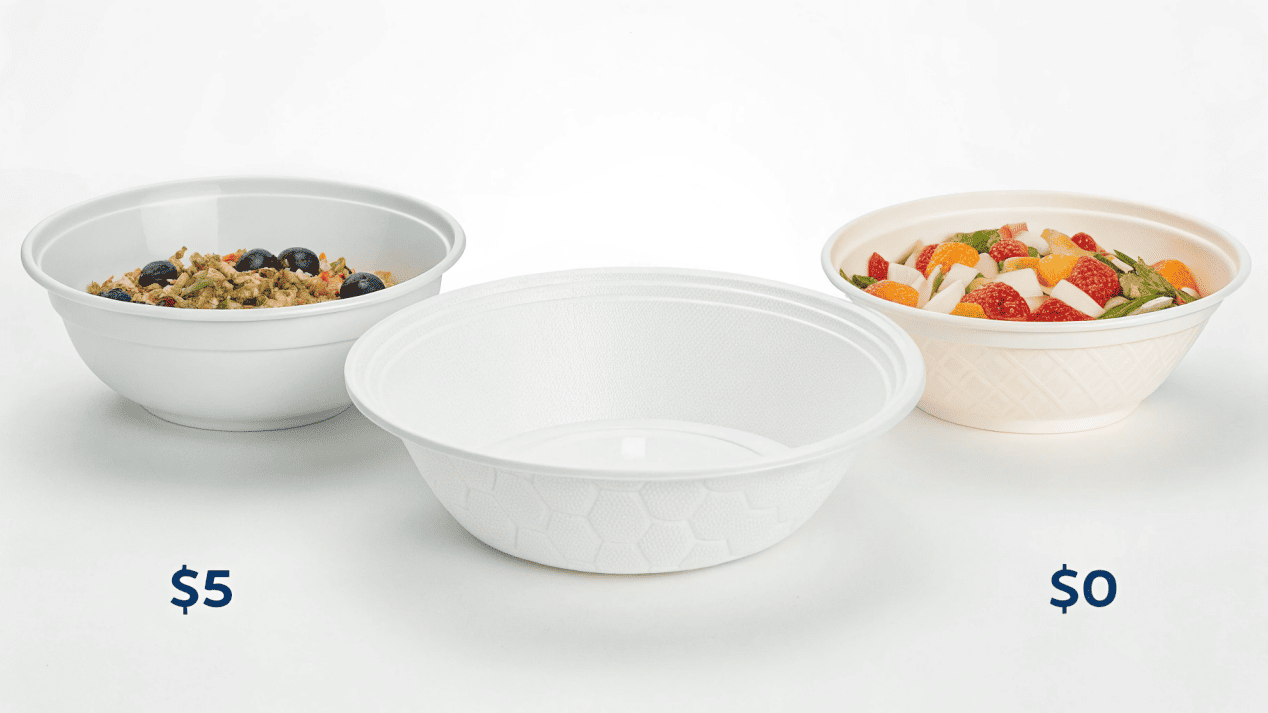
Price is always an important conversation. But I always tell my clients, we should talk about "value," not just price. The cheapest option is rarely the best for your brand. Here is how I break it down for them.
| Cost Tier | Bowl Type | The Reason |
|---|---|---|
| $ (Lowest) | Basic PP Plastic Bowls | Mass produced for pure function, with no branding. |
| $$ (Best Value) | Standard PE Coated Paper Bowls | The sweet spot. Great performance and can be custom printed. |
| $$$ (Premium) | Plant-Fiber (Bagasse) Bowls | More complex manufacturing process. |
| $$$ (Premium) | PET Plastic Bowls | The high-clarity plastic resin is more expensive. |
| $$$ (Premium) | Paper Bowls with Water-Based Coating | Advanced, eco-forward technology with higher material costs. |
The key takeaway is that a custom-printed paper bowl changes the equation. It stops being just a cost and becomes a marketing tool. The extra investment in printing pays for itself by putting your brand directly into your customer's hands.
What Types of Bowls Are Other Businesses Using?
You see what other cafes and restaurants are using and wonder why they made that choice. You're not sure if you should follow their lead or choose to go another way.
Fast-food restaurants use basic paper or plastic. Ice cream shops use custom-printed paper. Health cafes prefer clear PET or natural-looking bowls. Caterers often use microwavable PP plastic for convenience.
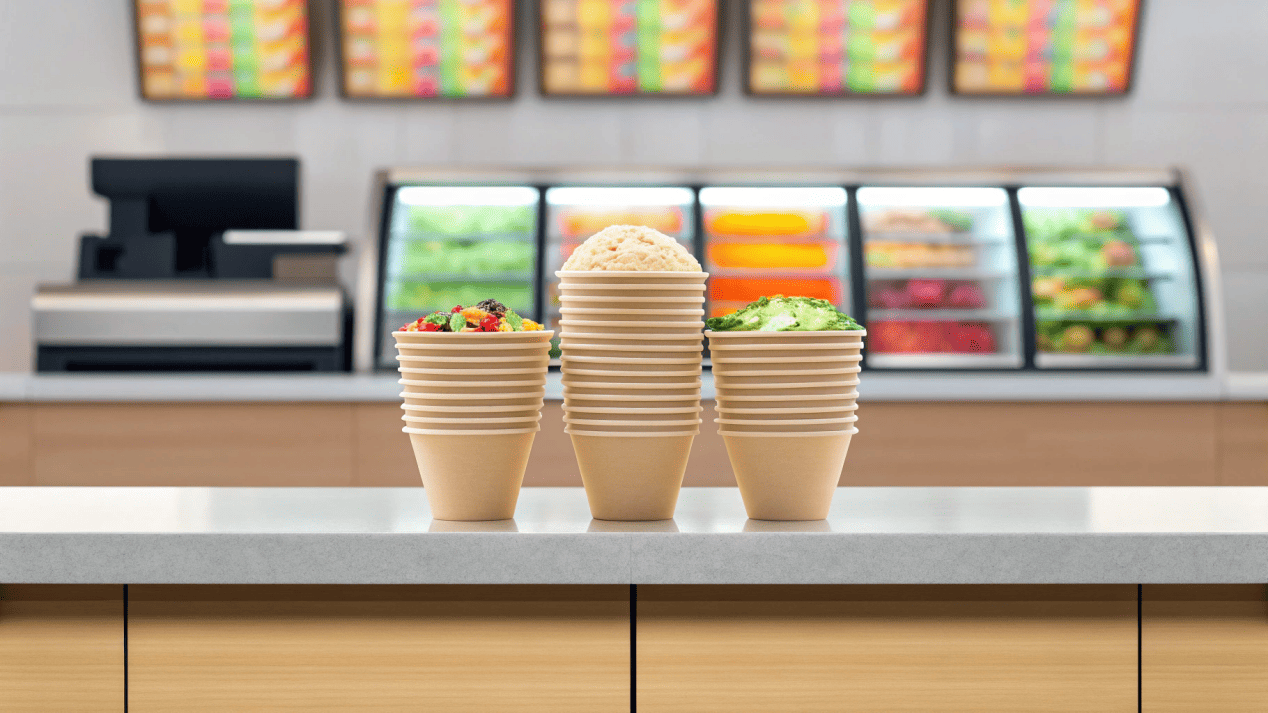
Watching the market can teach you a lot. Different businesses have different priorities, and their bowl choices reflect that.
Quick-Service Restaurants (QSRs)
They prioritize speed and cost. They often use basic, unprinted paper bowls for things like chili or oatmeal and cheap PP plastic bowls for simple side dishes. Function and cost are the most important factors.
Ice Cream & Frozen Yogurt Shops
These businesses sell an experience, not just a product. They almost exclusively use custom-printed, double-coated paper bowls. The bowl is a huge part of their branding and marketing.
Health-Conscious Cafes & Salad Bars
Here, appearance and values are key. They often use clear PET bowls to show off fresh, colorful ingredients in a grab-and-go case. Or, they use Kraft paper or bagasse bowls to match their natural, organic brand image. The most forward-thinking of these cafes are now adopting water-based coated paper bowls to prove their commitment to sustainability.
Caterers & Food Service
They need durability and utility. They lean heavily on PP plastic bowls because they are sturdy and can be easily reheated by the end customer in a microwave.
Conclusion
The best bowl matches your food, brand, and customer. For businesses that value quality, branding, and experience, the custom paper bowl remains the undefeated champion in today's market.
